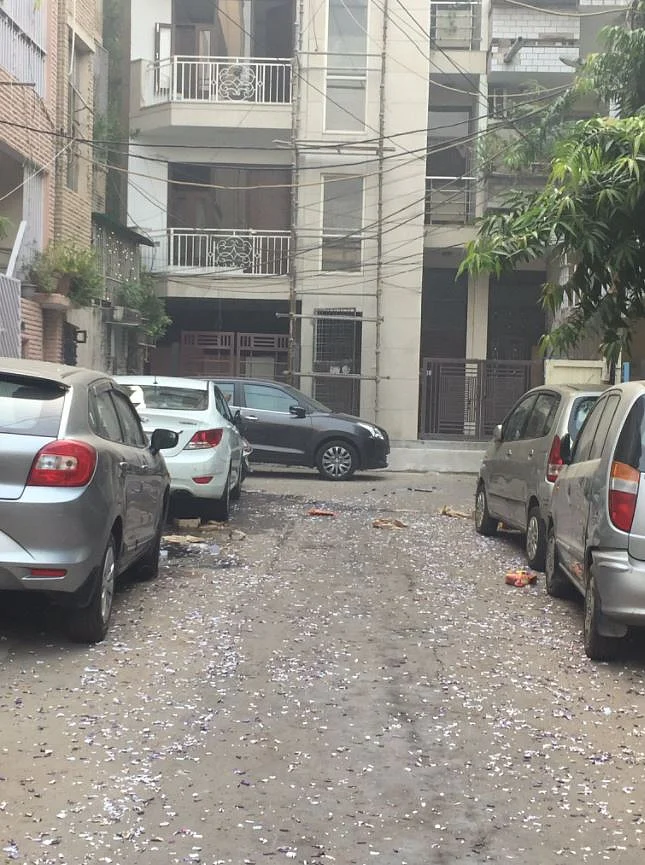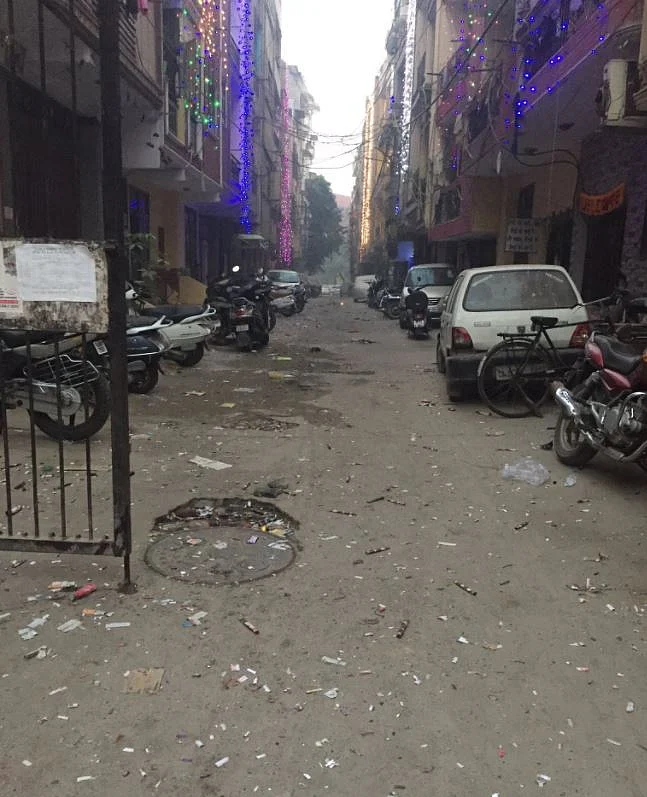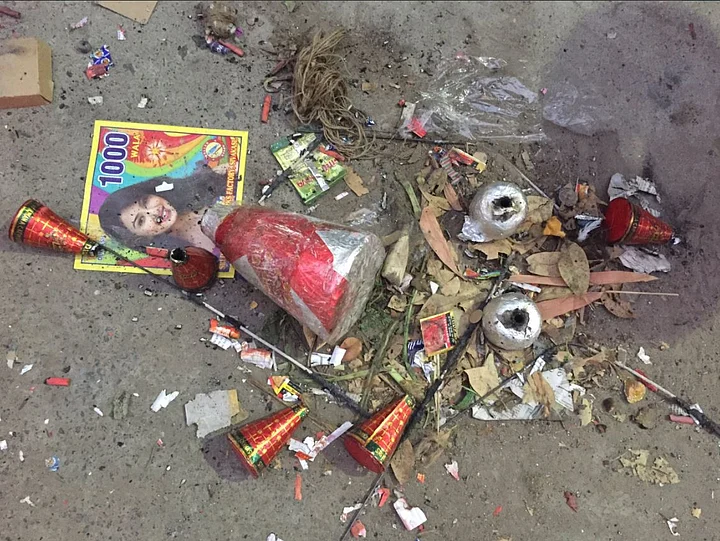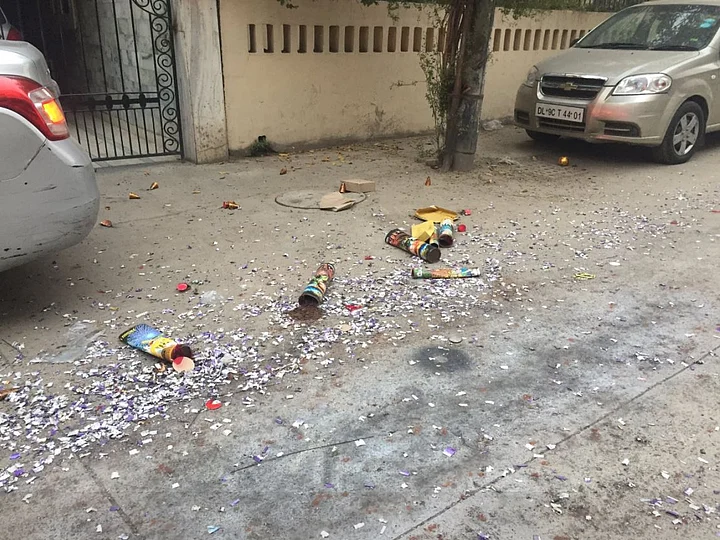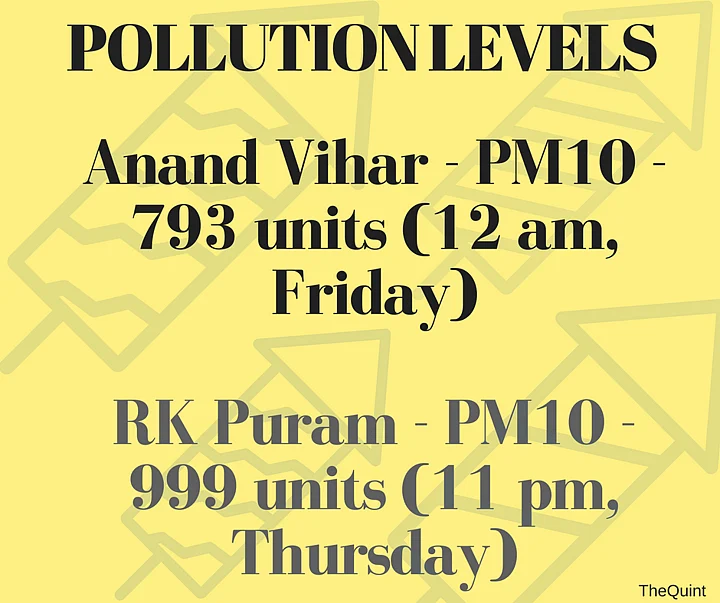Data released by the Central Pollution Control Board (CPCB) showed that air quality in the national capital remained "very poor", two days after Diwali.
According to the CPCB, the Air Quality Index (AQI), on 21 October, touched 389 – which falls under the "very poor" category. The air quality index for Delhi was the same on 1 November 2016 – two days after Diwali, IANS reported.
The national capital’s air quality took a sharp plunge into the ‘very poor’ zone On Friday, 20 October, the day after Diwali.
The pollution indicator of state-run System of Air Quality Forecasting and Research (SAFAR) turned red, indicating 'very poor' air quality in the city, which may affect healthy people and seriously impact those with existing respiratory or cardiovascular diseases.
The 24-hour rolling average of PM2.5 and PM10, ultrafine particulates which are up to 30 times tinier than the width of a human hair, were 424 and 571 micrograms per cubic metre (ug/m3) respectively, multiple times higher than the safe limits of 60 and 100.
The Quint did a spot-check around South Delhi and found that most lanes remained clean while others were littered with the remnants of Diwali’s fireworks.
Better than Last Year
The US Embassy's pollution monitor recorded 'hazardous' air quality with the index scoring an alarming 878, which SAFAR considers "beyond its air quality index" (AQI), which ends at 500.
But unlike previous years, the run-up to Diwali festivities was much cleaner this time. The CPCB's Diwali day air quality index had a score of 426 last year, which falls in the 'severe' – or the most polluted – category. This year, however, it was 326, making the air quality 'very poor', but still a shade better.
Even the evening was relatively quiet and promising, suggesting that the ban on sale of firecrackers in the Delhi-NCR region imposed by the Supreme Court has worked.
However, the volume of pollutants were almost identical, at places even higher, when placed against the figures of 2014 or 2015, making it difficult to attribute the marginal dip to any particular factor, such as the ban on the sale of firecrackers in the region by the Supreme Court on 10 October.
The online indicators of pollution monitoring stations in the city glowed red, indicating a 'very poor' air quality as the volume of ultra fine particulates PM2.5 and PM10, which enter the respiratory system and manage to reach the bloodstream, sharply rose from around 7 pm on Thursday, 19 October.
While it is difficult to quantify the immediate effect of the ban on firecrackers, residents across the national capital felt the beginning was promising with neighbourhoods reporting much lesser noise and smoke till about 6 pm, compared to the previous years.
But as the festivities picked up, the faint echos of crackers started growing louder.
However, if one goes by SAFAR's forecast, post-Diwali air will not be as poor as last year, which was the worse in at least three decades. It said a host of favourable meteorological conditions were helping prevent smoke-filled air from the agricultural belt of Haryana and Punjab from entering the national capital.
Had that not been the case, Delhi's air, already saturated with pollutants, would have turned deadlier.
The Supreme Court-appointed Environment Pollution Prevention and Control Authority (EPCA), which is empowered to enforce the Graded Response Action Plan (GRAP) to combat air pollution in Delhi-NCR, kicked off a series of preventive measures on 17 October.
Measures under the GRAP's 'very poor' and 'severe' categories, which include a ban on diesel generator sets, have come into effect and will remain in force till 15 March.
Ahead of Diwali, there were multiple reports of how the ban wasn’t working, and 19 October night stands testimony. The Quint asked people across Delhi NCR to tell us where they live and if crackers were being burst in their vicinity. This is what they told us as the festivities wore on:
Also read: Ban on Cracker Sales in NCR, But Home Delivery Just a Click Away?
At 1.00 am, while crackers continue to burst after longer intervals, a health advisory said masks should be worn before heading out.
Also read: Look at This and Then Decide If You Still Want to Burst Crackers
The Supreme Court had banned the sale of crackers till 1 November, hoping to understand the impact of the ban on pollution levels in the city.


